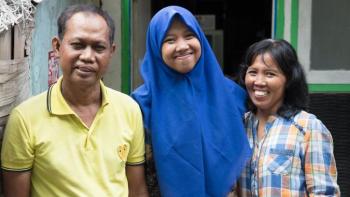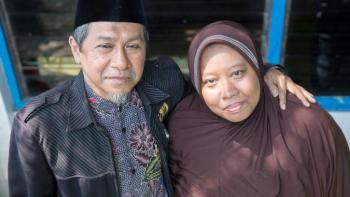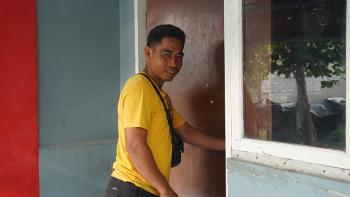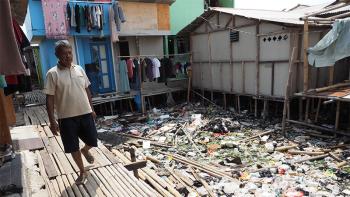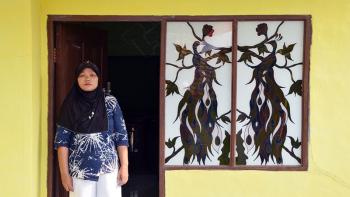Quick Facts
Individuals served in FY22: 71,460
- Through new construction – 1,390
- Through rehab – 11,445
- Through incremental building – 305
- Through repair – 185
- Through market development – 58,135
Volunteers engaged in FY22: 820
Other facts:
- Population: 273.7 million
- Life expectancy: 71 years
- Unemployment rate: 3.6 percent
- Population living below poverty line: 2.5 percent
Source: World Factbook, World Bank
Habitat for Humanity in Indonesia
Habitat for Humanity started in Indonesia in 1997 and currently works through branches in Jakarta, Surabaya, Yogyakarta, and Batam. Habitat aims to galvanize resources to help more than 40,000 families improve their housing conditions and provide access to housing in the next two years. Habitat Indonesia aims to reach 100,000 families served by supporting through housing, market development, water and sanitation, and open defecation-free programs by 2020.
The housing need in Indonesia
As of 2022, the government estimated the housing backlog was 12.71 million units. Newly married couples are expected to increase the demand by up to 800,000 units annually. The economy’s decline due to the COVID-19 pandemic had affected the housing market while frequent disasters in the country intensified shelter needs.
For 25 years, Habitat for Humanity Indonesia has partnered with more than 182,500 families through new or improved housing, market development, and water, sanitation and hygiene programs. Habitat works through branches in Jakarta, Surabaya, Yogyakarta, and Batam.
How Habitat addresses the need in Indonesia
Habitat works with its partners to build, repair and rehabilitate homes, and improve water and sanitation and educational facilities. Besides rebuilding homes after disasters, Habitat trains people to prepare for and lessen the impact of future disasters. Habitat Indonesia also aims to help 24,200 families through supporting its partners to increase products, services and financing for affordable housing. By 2020, Habitat Indonesia aims to mobilize 20,000 volunteers in raising awareness of the need for adequate housing.
Safe, secure homes
Habitat houses in Indonesia conform to national quality standards and come with a reinforced concrete structure, brick walls and a lightweight steel roof. Between 28 and 30 square meters in size, each house has two bedrooms, a multipurpose room and a toilet. Habitat for Humanity Indonesia is currently developing climate-smart housing to mitigate the effects of climate change.
Disaster response and preparedness
Since its response to the 2004 Indian Ocean tsunami, Habitat Indonesia continues to help disaster-affected families including disasters in 2022 and 2021 – the Cianjur earthquake, Mount Semuru eruption, Cyclone Seroja in East Nusa Tenggara and Mount Semuru eruption. Rubble removal kits and emergency hygiene kits were distributed, and transitional shelter and water and sanitation facilities were built. Habitat Indonesia also provides community-based disaster risk management training, helping tens of thousands of families.
Housing microfinance partnerships
Together with Habitat for Humanity’s Terwilliger Center for Innovation in Shelter, we collaborated with microfinance institution KOMIDA to develop a housing loan product, serving more than 10,000 low-income families. KOMIDA now offers the housing loan product at 50 branches across Indonesia.
Volunteer engagement
Due to the pandemic, we could not host international volunteers until February 2023. With the resumption of Global Village program in Asia-Pacific, we hosted a corporate team from Korea. We continue to engage local volunteers from corporations, international schools as well as various universities through the Habitat Young Leaders Build.
